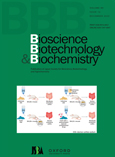[on December 15, 2018]
Visionary NOUGEIKAGAKU 100
Symposium (2) on Microbe and Biomass Area: "Microbes in our health, daily life, and environments: World class achievements of applied microbiology research in Japan"
Date & venue; Tohoku University on December 15, 2018
1. Studies on microorganisms and their enzymes
Michihiko Kobayashi, Graduate School of Life and Environmental Sciences, University of Tsukuba
I am interested in not only microbiology but also biochemistry, and molecular biology. Today, I show you some of microbial research. Particularly, nitrile studies have received much attention from fundamental and applied standpoints. Industrial manufactures of acrylamide and nicotinamide have been performed using microbial enzyme of nitrile hydratase which catalyzes the conversion of nitrile to amide. In the industrial microorganism, this enzyme can be inducibly produced through a unique regulatory mechanism of the enzyme gene expression. There are interesting phenomena and a big power in microorganisms and their enzymes.
2. Microbes active for cleaning up environmental pollutants
Yuji Nagata, Graduate School of Life Sciences, Tohoku University
Microbes in the environment degrade various chemical compounds, and some bacteria can even "eat" artificially synthesized environmental pollutants. Such bacterial strains have been isolated and characterized for the bioremediation of environmental pollutants, and have also attracted attention for their potential to be evolutionarily adapted to degrade man-made compounds unfamiliar to them. Previous studies have revealed the relevant genes and enzymes in such bacteria, and how they exert their pollutant-degrading ability at the cellular level. However, little is known about the evolutionary "process" that these bacteria undergo, which appears to be relatively rapid in a contaminated environment. Now we address the evolutionary mechanisms underlying the emergence of such pollutant-metabolizing bacteria at the environmental, consortia, cell, genome, gene, protein, and enzyme levels.
3. How are essential enzymes for the manufacturing of sake and soy sauce produced by a koji mold?
Katsuya Gomi, Graduate School of Agricultural Science, Tohoku University
The koji mold Aspergillus oryzae has been used for Japanese traditional fermented foods, such as sake, soy sauce, and soybean paste over a thousand years, and thus it is called "Japanese national microorganism". This fungus can produce copious amounts of enzymes required for the manufacturing of those fermented foods, namely amylolytic, proteolytic, and lipolytic enzymes. In this lecture, regulatory mechanisms for the production of amylolytic enzymes essential for sake making will be introduced by referring the function of the important transcription factors AmyR and MalR. In addition, several enzymes of the koji mold are produced only in solid-state culture, like koji preparation, but not in submerged culture. Recently, we have identified the novel transcription factor FlbC that is essential for the production of the enzymes specifically produced in solid-state culture, which also will be introduced in my talk.
4. Enzyme industry and Microorganism
Yuzo Kojima, Amano Enzyme Inc.
Enzymes are proteins that act as catalysts in all living organisms – microorganisms, plants, animals, and humans. Presently, there are over 4,000 different kinds of enzymes. Enzymes function in a mild environment, similar to the body environment of a living organism. Enzymes function as highly selective catalysts in such a way that they selectivity catalyze specific reactions (reaction specificity) and specific materials (substrate specificity). The applications of enzyme are wide such as for industry, food, and pharmaceutical etc. Technology for the use of enzymes for the improvement of human life remains a key attribute and principle of biotechnology.
5. Euglena makes new future
Osamu Iwata, euglena Co., Ltd.
In 2005, our company was established with the aim of producing and supplying Euglena gracilis, a kind of microalgae, and in the same year, it succeeded in having the world's first outdoor large-scale cultivation of E. gracilis as a food source. It is known to incorporate various nutrients in the cells and is suitable for food supplements. In the future, by reducing production costs, its use may expand to other purposes such as fiber, feed, fertilizer, and fuel. It is also expected that E. gracilis may help overcome several social problems as hunger and global warming.
6. Microbial drug discovery
Yoko Takahashi, Kitasato Institute for Life Sciences, Kitasato University
Many biologically active substances have been discovered from secondary metabolites of microorganisms such as actinomycetes and fungi, and have been contributed to human beings as pharmaceuticals so far. This drug discovery study, starting with the isolation of microorganisms from environmental samples, takes labor and time and takes more than ten years to actually market. In order to find useful new compounds, it is important to collect many new microorganisms. It is said that human are successfully culturing less than 1% of the microbial species inhabiting environment. In order to isolate microorganisms that have not yet seen, it is necessary to develop culturing methods using various environmental samples.












































